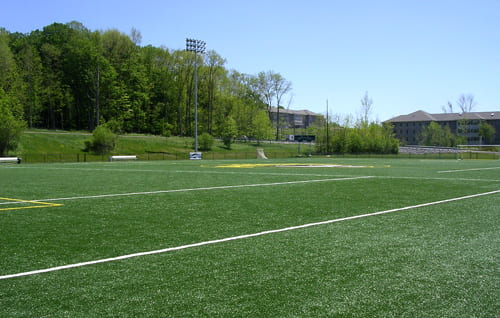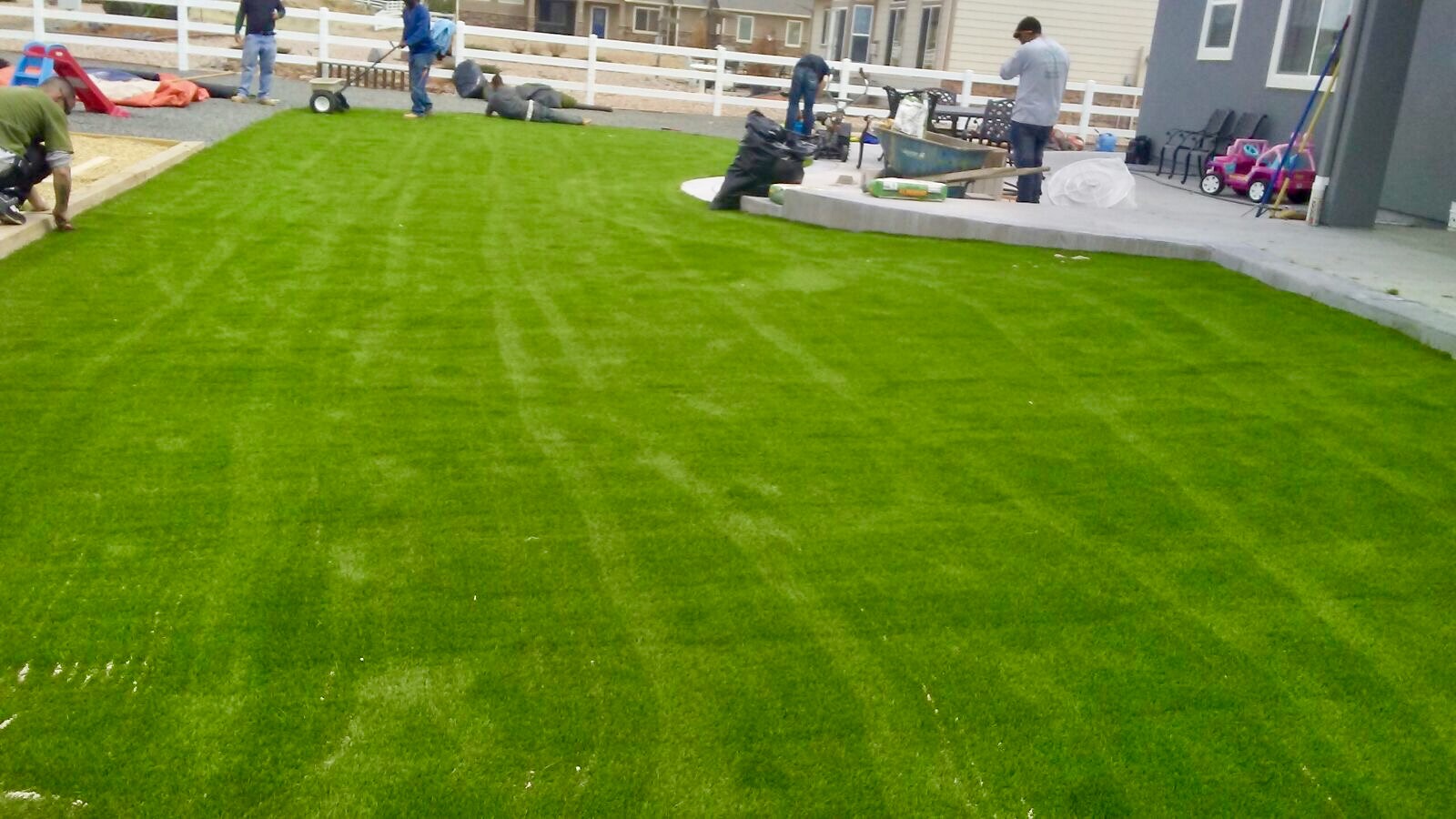Delve Into the Environmental Benefits of Opting for Synthetic Grass Solutions
The fostering of fabricated grass solutions provides a compelling opportunity to deal with pushing ecological difficulties. By significantly reducing water usage and lessening the application of dangerous chemicals, these options not only advertise sustainable landscaping however likewise protect regional ecosystems.
Water Conservation Benefits
Among the most significant advantages of synthetic grass is its capacity to save water. Typical turf yards require substantial watering, specifically in areas vulnerable to drought or water constraints. In contrast, synthetic grass does not require watering, considerably reducing the general need for water sources. This function is especially useful in deserts where water scarcity is a pressing worry.
By removing the requirement for routine watering, fabricated lawn adds to sustainable landscape techniques and helps alleviate the ecological impact of extreme water usage. Furthermore, the preservation of water encompasses the reduction of runoff, which can result in soil disintegration and waterway contamination.
Additionally, the setup of synthetic grass permits communities and house owners to allocate water resources a lot more efficiently, concentrating on essential usages such as alcohol consumption water and farming. The shift in the direction of synthetic grass not just advertises responsible water use but likewise aligns with more comprehensive ecological goals intended at preserving natural deposits.
As neighborhoods progressively focus on sustainability, the water conservation advantages of fabricated turf provide a compelling instance for its adoption in household and business landscaping projects.
Lowered Chemical Usage
The change to man-made grass considerably lowers the dependence on chemical treatments typically made use of in all-natural grass maintenance. Standard turf administration usually involves the application of fertilizers, herbicides, and pesticides to promote growth and control pests. These chemicals can pose risks to human health, neighborhood wild animals, and the environment, adding to dirt and water contamination.
In comparison, artificial grass removes the demand for these hazardous compounds. By reducing the release of artificial substances right into the community, artificial grass promotes healthier dirt and water systems.
Additionally, the absence of chemical drainage connected with artificial turf installations helps secure neighborhood waterways from contamination, sustaining aquatic life and preserving biodiversity. Arizona turf. As areas increasingly prioritize lasting methods, going with fabricated grass offers a practical service that straightens with environmental conservation goals. Via this change, homeowner can delight in lush eco-friendly rooms without jeopardizing environmental health and wellness, paving the means for a much more sustainable future
Lower Carbon Footprint

In addition, the installation of synthetic grass can cause considerable water preservation. All-natural grass need considerable amounts of water for watering, which not only includes in the carbon impact connected with water extraction and treatment however additionally stress regional water sources. In contrast, synthetic grass needs minimal maintenance, needing no watering, therefore substantially lowering water use and its associated energy costs.
In addition, the long life of synthetic grass adds to its decreased carbon influence. With a lifespan of as much as 15 years or even more, the need for regular replacements is reduced, leading to less waste and reduced power consumption in production and throwing see it here away standard turf alternatives. In general, artificial turf presents a sustainable option for eco mindful landscape design.
Habitat Preservation
Environment conservation is an important consideration in the debate over landscaping options, specifically when comparing synthetic grass to natural yard. All-natural lawn yards frequently require extensive maintenance, including making use of fertilizers, chemicals, and herbicides, which can adversely impact neighborhood ecological communities. These chemicals can leach into the soil and rivers, harming native plants and animals and interfering with neighborhood environments.
In comparison, synthetic grass presents a chance to decrease the eco-friendly impact of landscape design. By choosing artificial turf, property owners can minimize the disturbance of natural environments connected with typical lawn care methods. Synthetic grass eliminates the demand for dangerous chemicals, therefore securing neighboring wildlife and maintaining the integrity of surrounding ecological communities. In addition, the setup of artificial lawn can lead to the conversion of previous yard areas right into even more biodiverse landscapes, such as pollinator gardens or indigenous plant locations, which can sustain neighborhood wild animals.
Ultimately, the change to man-made lawn not only conserves water and lowers upkeep efforts but likewise promotes a much more harmonious connection in between human activities and the natural surroundings, promoting habitat conservation while doing so.
Long-Term Sustainability
Long-lasting sustainability is an essential element in reviewing the advantages of synthetic lawn over traditional grass yards. Among the most considerable benefits of fabricated lawn is its resilience; it can last up to 15-20 years with minimal maintenance, whereas all-natural lawn requires frequent reseeding and replacement. This longevity reduces the requirement for continuous resources, such as water, plant foods, and chemicals, which are essential for preserving a healthy yard lawn.
In addition, synthetic grass This Site adds to a reduction in carbon exhausts connected with yard treatment equipment. Standard lawns often call for gas-powered mowers, leaners, and blowers, all of which add to air pollution. Artificial turf companies phoenix. In comparison, artificial grass gets rid of the demand for such equipment, advertising a cleaner environment
Additionally, the production of synthetic grass progressively makes use of recycled materials, boosting its sustainability profile. As producers take on environment-friendly practices, the environmental impact of synthetic grass proceeds to diminish.

Conclusion
The fostering of artificial turf options offers substantial ecological benefits, consisting of substantial water conservation, reduced reliance on damaging chemicals, and a lower carbon impact. Man-made turf help in preserving all-natural habitats by reducing land disruption and promoting long-lasting sustainability via the usage of durable products. Jointly, these factors underscore the possibility of synthetic grass to add favorably to environmental health and provide a sensible this page alternative to traditional landscaping methods in a significantly resource-conscious globe.
In comparison, artificial turf does not need watering, dramatically minimizing the total demand for water resources. By reducing the launch of artificial compounds into the ecological community, synthetic lawn promotes healthier dirt and water systems.
Furthermore, the setup of man-made lawn can result in substantial water conservation. In comparison, artificial turf needs minimal maintenance, requiring no watering, consequently substantially minimizing water use and its linked energy costs.
